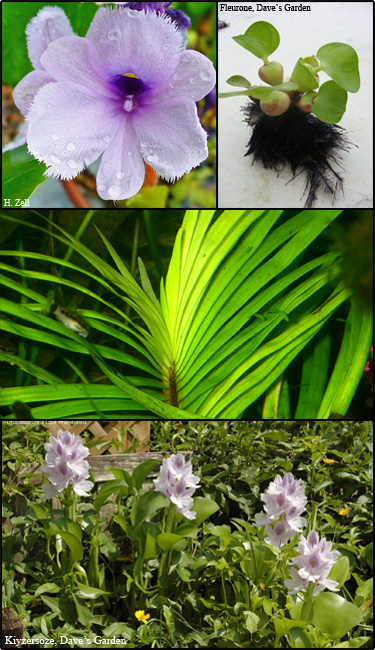Anchored water hyacinth (Eichhornia azurea)
 Description: Introduced to the United States as an ornamental in 1884.
Description: Introduced to the United States as an ornamental in 1884.Habit: Rooted perennial aquatic plant.
Leaves: Alternate along the stem. Submersed leaves are sessile while emersed leaves are petiolate. The petiole is never inflated.
Stems: Erect
Flowers: Held on erect stems obove the water surface. Can be from 7 to as many as 50 flowers per stem. Each flower blooms for 1 day and occurs from summer through fall.
Fruit and seeds: each flower can produce 10-13 small winged seeds.
Habitat: Native to Central and South America. Found in freshwater lakes, reservoirs, ponds, marshes and ditches.
Reproduction: By seed or vegetatively.
Similar species: American spongeplant (Limnobium spongia).
Monitoring and rapid response: Small populations can be hand pulled before flowering and seed-set. Aquatic herbicides can provide temporary control in small scales. Neochetina eichhorniae, N. bruchi (weevils), and Niphograpta albiguttalis (moth larvae) have been used in tropical and subtropical populations. Credits: The information provided in this factsheet was gathered from the Wisconsin Department of Natural Resources and the Bugwood Wiki.
Individual species images that appear with a number in a black box are courtesy of the Bugwood.org network (http://www.invasive.org).Individual photo author credits may not be included due to the small display size of the images and subsequent difficulty of reading the provided text. All other images appear courtesy of Google (http://images.google.com).
Common Name: | Anchored water hyacinth |
Scientific Name: | Eichhornia azurea |
Family: | Pontederiaceae (Water hyacinth) |
Duration: | Perennial |
Habit: | Aquatics |
USDA Symbol: | EIAZ2 |
